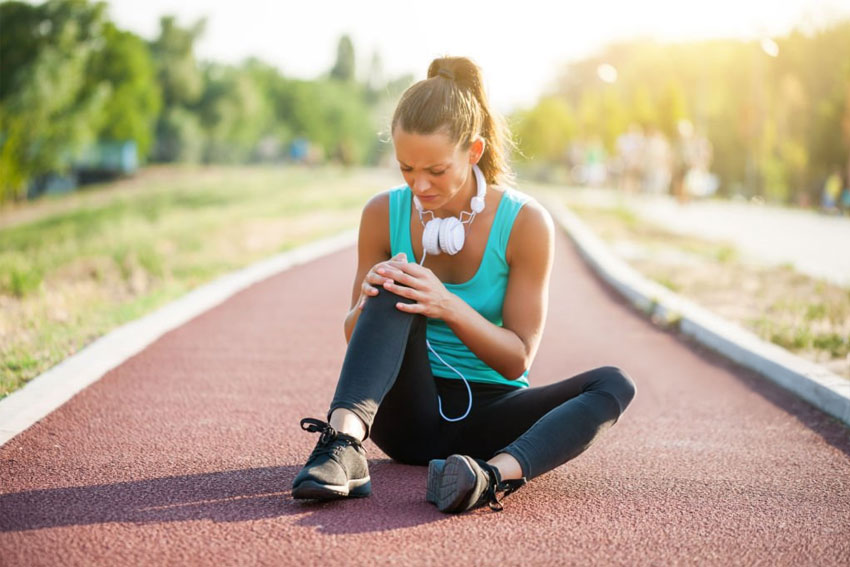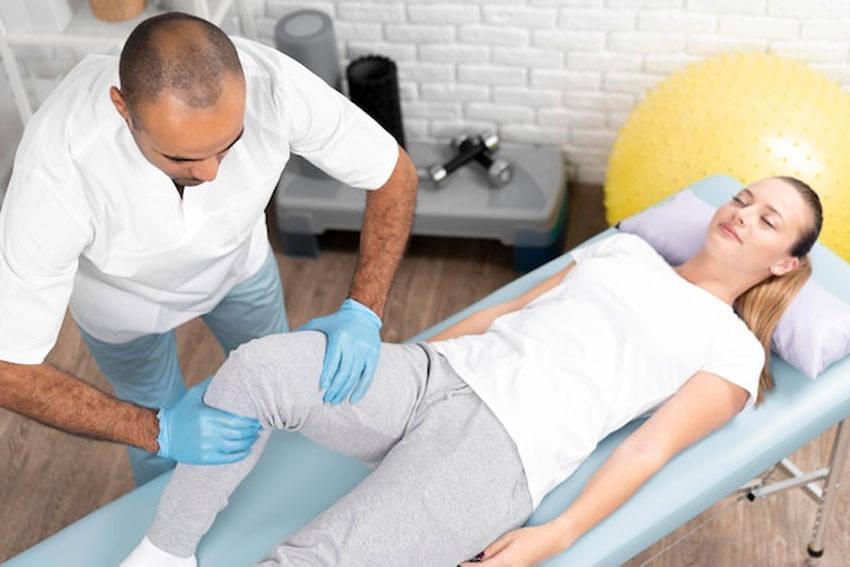
Knee Pain After Running: Causes and Treatment Using Physiotherapy
Running is a great way to remain healthy and fit; it may cause some discomfort, especially for the knee. Pain in the knee while running or afterward renders one unable to enjoy the favorite sport. In this blog, we’ll discuss the common causes of knee pain after running, the usual symptoms associated, and how physiotherapy can manage and treat this pain in a much more effective way.
What Causes Knee Pain After Running?
Knee pain after running can stem from several issues. It can be bad running technique, overuse, or even underlying medical conditions that are causing. Some common causes are:
1. Runner’s Knee (Patellofemoral Pain Syndrome)
Runner’s knee, medically known as patellofemoral pain syndrome, is one of the most frequent reasons for knee pain after a running session. It is a pain syndrome that occurs when the cartilage behind the femoral head becomes inflamed and grows thinner as a result of repetitive joint. This condition brings about the pain that is felt around the kneecap after running and most of the time after prolonged sitting.
2. IT Band Syndrome
The IT band is a thick piece of tissue that runs along the outside of your leg from hip to knee. When this band gets tight or swollen, it can cause pain on the outside of your knee. This is IT band syndrome. IT band syndrome is common in runners who exceed their mileage too quickly.
3. Patellar Tendonitis
Patellar tendonitis is when the tendon that connects the kneecap to the shin bone becomes inflamed from overuse. This affects runners who do high intensity workouts or runners who run on hard surfaces.
4. Osteoarthritis
Osteoarthritis is a degenerative condition that affects the cartilage in the knee joint causing pain and stiffness. It’s more common in older runners but can occur in younger runners as well. Running can exacerbate the symptoms of osteoarthritis especially if you have an underlying knee condition.
5. Overuse and Poor Running Form
Sometimes, knee pain after running is from overuse or running with bad form. Running too much without rest or running with poor technique can put extra stress on the knee and cause pain and discomfort.
Symptoms of Knee Pain After Running
The symptoms of knee pain after running can vary depending on the underlying cause. Common symptoms include:
- Pain in the front of the knee: This is common with runner’s knee, or patellar tendonitis. Pain in the front of the anterior of the knee, especially after running or jumping too much.
- Pain on the side of the knee: This is IT band syndrome: pain on the outside of the knee that gets worse with running longer distances and walking.
- Stiffness and swelling: This osteoarthrosis or the overuse of the knee. Tightness of the knee, difficulty in moving, and swelling, particularly after long-distance running or standing for long.
- Difficulty bending or straightening the knee: This condition results from an injury or an inflammation process within the knee. If the knee is swollen and stiff, painful and cant be bent or straightened completely.
If you experience any of these symptoms after running, it’s important to pay attention to your body and take the necessary steps to address the issue before it gets worse.
Pain Behind Knee After Running
Pain behind the knee after running can be caused by several factors. Some possible causes include:
- Hamstring Strain
If you experience pain behind the knee after running, it could be due to a hamstring strain. The hamstring muscles, located at the back of your thigh, can become strained if they are overworked or stretched too much during running. - Baker’s Cyst
A Baker’s cyst is a fluid-filled swelling that can form at the back of the knee, often causing pain and stiffness. This condition can develop after a knee injury or due to inflammation in the joint. - Meniscus Tear
A tear in the meniscus (the cartilage in the knee) can also cause pain behind the knee. This type of injury is often caused by sudden twisting motions or repetitive stress on the knee joint.
How Physiotherapy Can Help With Knee Pain After Running

Physiotherapy is a great way to treat knee pain after running, as it focuses on addressing the root cause of the problem rather than just masking the symptoms. A physiotherapist will assess your condition and create a personalized treatment plan to help you recover.
Here are some ways physiotherapy can help:
1. Correcting Running Form
One of the first steps a physiotherapist will take is to analyze your running form. Poor technique can put unnecessary stress on your knees, leading to pain. By correcting your form, you can reduce the strain on your knees and prevent future injuries.
2. Strengthening Exercises
Weak muscles around the knee, especially the quadriceps and hamstrings, can contribute to knee pain after running. Physiotherapists use targeted strengthening exercises to help build up these muscles, improving stability and reducing the risk of injury.
3. Stretching and Flexibility
Tight muscles can also contribute to knee pain from running. Physiotherapists may recommend stretches for the quadriceps, hamstrings, IT band, and calf muscles to improve flexibility and prevent muscle imbalances.
4. Manual Therapy
Manual therapy involves hands on techniques for improving joint mobility, reduce pain and inflammation. A physiotherapist uses techniques such as massage, joint mobilisations or soft tissue release to help with knee pain when running.
5. Modalities for Pain Relief
Physiotherapists also use modalities like ice or heat therapy, ultrasound or electrical muscle stimulation to reduce pain and inflammation. These can be especially helpful in the early stages of an injury when swelling and discomfort is present.
6. Education and Injury Prevention
Physiotherapists will teach you proper running techniques, warm up and cool down routines and injury prevention strategies. This can help you never get knee pain when running again.
Knee Pain When Running: Prevention Tips
Preventing knee pain after running is always better than treating it later. Here are some tips to help you avoid knee pain in the future:
- Warm-up properly: Always warm up before running with dynamic stretches and gentle movements.
- Use proper footwear: Wear shoes that gives you good support and cushioning to reduce the impact on your knees.
- Gradually increase your mileage: Don’t increasing your mileage too quickly. Gradual increases help your body adjust to the added stress.
- Cross-train: Include other exercise like swimming or cycling to reduce the strain on your knees while keeping you fit.
- Rest and recover: Take rest days to let your muscles and joints recover. Overtraining can lead to overuse injuries.
When to Seek Professional Help
If you experience persistent knee pain after running for a long time, see a physiotherapist or healthcare professional. The earlier you seek help, the better it is for the malignancy of the injury to shrink and much quicker recovery time. Also, if you’re suffering from excruciating pain, swelling, or immobility of the knee, relevant medical assistance should be sought immediately.
Specialized physiotherapy from Rapid Physiocare offers ways to help you manage and get rid of knee pain after running, among other physical conditions. Concentrating on individualized care, they provide effective treatments, including injury rehabilitation, manual therapy, sports physiotherapy, strength and conditioning programs, among many others. Their experts use evidence-based practice to ensure that all patients get excellent treatment. You can find Rapid Physiocare in Tanjong Pagar, Novena, and other locations around Singapore, so it’s pretty convenient for those living there to access to their top-notch physiotherapy services.
Conclusion
Knee pain after running are a common problem for many runners-but that doesn’t have to hold you back. In understanding the root cause of knee pains, whether they are runner’s knee, IT band syndrome, or patellar tendonitis, seeking treatment through physiotherapy can bring you back to pain-free running. A combination of good technique, strengthening exercises, and injury prevention will serve you well in maintaining good health and enjoyment on your runs without worrying about knee pains.



